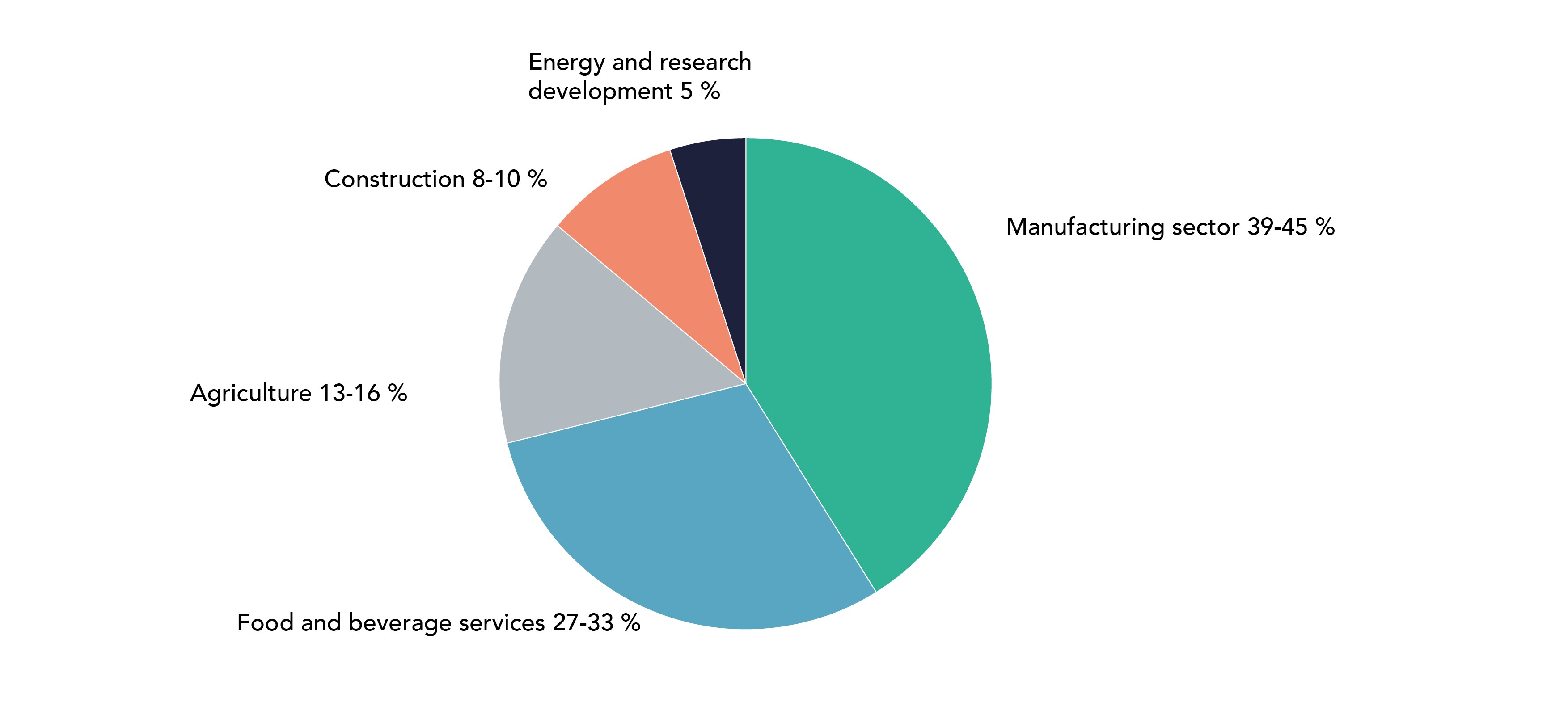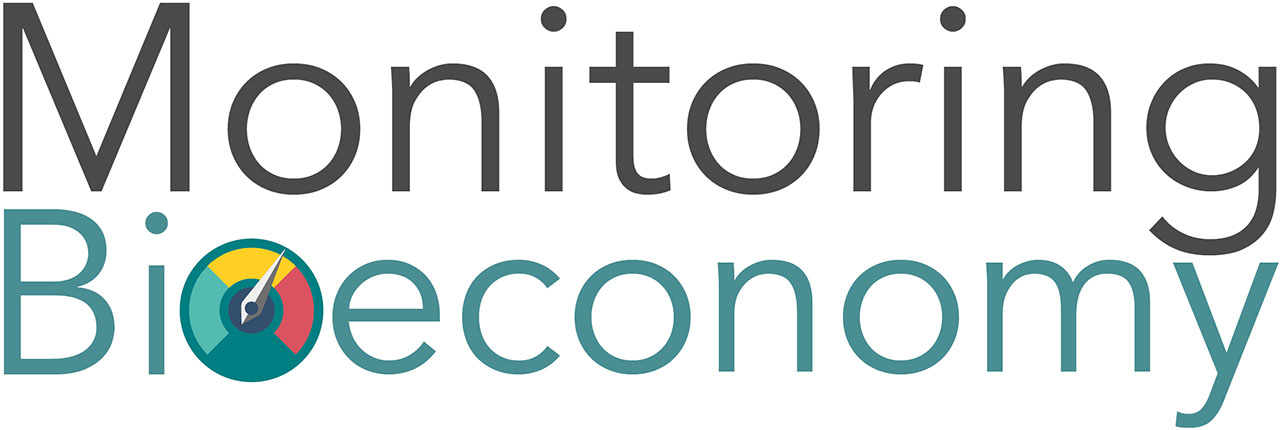The bioeconomy contributes to around 8 – 9 % of total employment in Germany (2017) [1]. The largest shares of the workforce are employed in the manufacturing and food and beverage sectors.

Breakdown of workface shares employed in the German bioeconomy. (Source: Thünen Institute (2017) [1]).
While the total number of employees in Germany increased by around 9 % between 2010 and 2017, a stagnating or slightly declining trend was seen in the bioeconomy over the same time period. This was primarily due to a decline in the number of people employed in agriculture (-15 % compared to 2010). Likewise, the paper and printing industry, the chemical industry and furniture production contributed to the decline [1].
Summary
Globally, around one-third of the total workforce is employed in the bioeconomy. In Germany, the share is less than one-tenth. While this worforce generates around 5 - 6% of the country's gross value added, the bioeconomy's climate footprint contributes to 18 – 20 % of the total climate footprint [2].
Notes and references
- Thünen-Institut based on (Eurostat 2019b) published in Bringezu et al. (2021). Pilot report on the monitoring of the German bioeconomy. doi:10.17170/kobra-202201115406.
- Bringezu et al. (2021). Environmental and socioeconomic footprints of the German bioeconomy. Nat. Sustain. doi:10.1038/s41893-021-00725-3.



